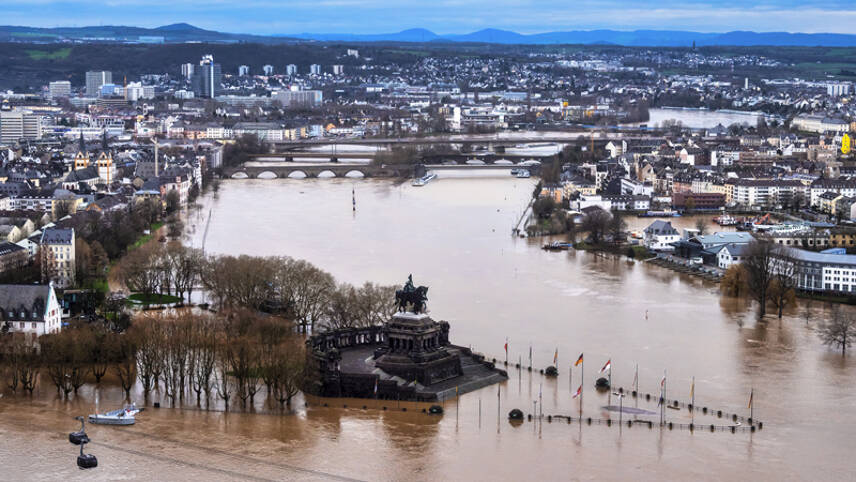Register for free and continue reading
Join our growing army of changemakers and get unlimited access to our premium content

Pictured: Koblenz, Germany, during flooding in summer 2021
The initiative has provided details of its plans for the next phase of its Water Safe Cities work, including its commercial and philanthropic partners for the project, Grundfos and Grundfos Foundation.
During the first phase of the initiative, cities were supported to disclose risks relating to river flooding, coastal flooding and drought. It was revealed that participating cities are collectively facing annual costs relating to these risks of $194bn by 2050.
Now, C40 Cities will create a Water Accelerator – a platform through which cities can improve their pledges to safeguard water supplies and protect residents from flooding. The platform will also support cities to embed these pledges into their climate and urban planning approaches.
The overarching aim is to help cities develop, implement and achieve targets based in science regarding water-related risks.
The development of science-based targets is already underway for the corporate sector, with the World Resources Institute (WRI) working with corporates such as Procter & Gamble and General Mills to improve the framework ahead of a public launch. The WRI is also collaborating with several other NGOs to advocate for science-based water targets that could apply in the public sector as well.
In a statement, C40 Cities wrote that its team “has rigorous experience in supporting cities’ commitments and will leverage this expertise to make this accelerator a success”. The statement adds: “C40’s role will be working alongside cities to develop ambitious water targets through a pathways approach and research. This will allow cities to have multiple options to choose from based on their city’s water hazards, local conditions, and resources. Each pathway will also set clear, ambitious yet achievable targets for cities.”
Cities will also be able to use the platform to report on progress and identify potential opportunities for additional interventions.
Almost 100 city leaders are participating in C40 Cities and many have already contributed to the initiative’s existing water schemes. These include an Urban Flooding working group and a ‘Water-Secure Cities’ network. Some of the world’s most flood-hit places partake in the initiative, including New Orleans, Mumbai, Seoul, Ho Chi Minh and Salvador.
“Water excess and scarcity are among the most urgent challenges of our lifetime,” said the Grundfos Foundation’s chief executive Kim Nøhr Skibsted “Water Safe Cities I was about researching the global issue of urban flooding and drought; now, the newly launched Water Safe Cities II lays the pathway for action and will explore a solid delivery approach that helps to build water-resilient cities.”
Water risks crystallising
The summer of 2022 will doubtless be remembered by residents in many places as a season defined by drought or flooding.
In the UK, where edie is based, ten English regions and five Welsh regions officially declared drought at some point in July or August. Scotland was also on a rare category ‘red’ water shortage alert for much of August. Hot weather, prolonged dry periods and outdated infrastructure contributed to this situation. The picture was even worse in large parts of mainland Europe. More than 60% of the continent was in a drought as of mid-August, which the European Commission has called the worst in 500 years.
Drought is also gripping China and northern Mexico in events regarded as the worst on record.
Yet other parts of the world, from Seoul to Dallas, have experienced flash flooding this winter, and Pakistan is dealing with a flooding crisis that has submerged one-third of its land. Pakistan declared a state of emergency in late August and, by Wednesday (14 September), at least 1,300 people were pronounced dead.


Please login or Register to leave a comment.